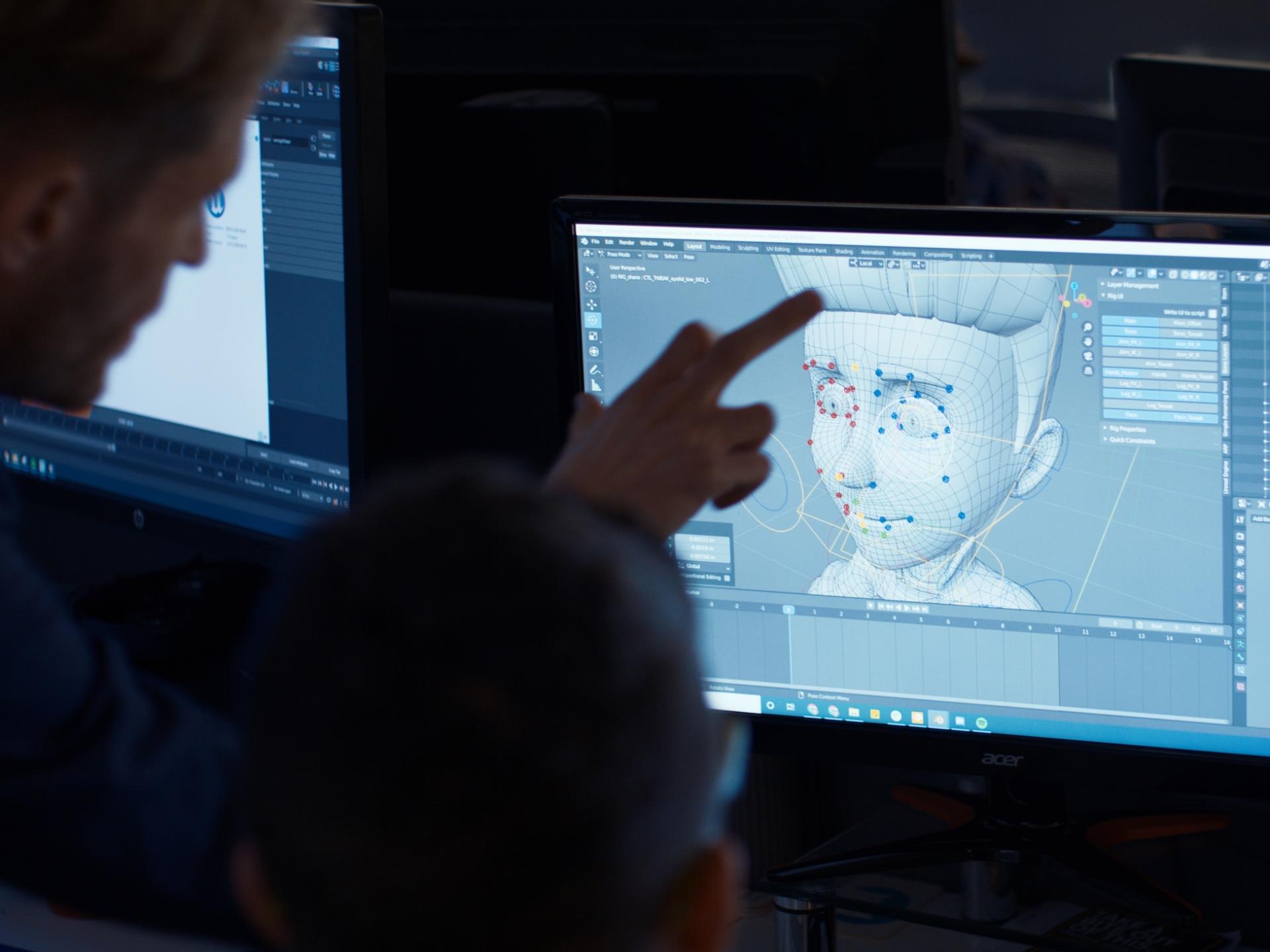About Cloth Cat Animation
Cloth Cat Animation, founded in 2012, is an animation studio that offers animation services for broadcast series, interactive games and online.
Animation is a creative process, but it relies heavily on digital services.
We find that improvements in animation technology can sometimes have the unintended consequence of slowing down production, which can impact how creative the animation process is. As Clwstwr funds R&D for creative technology, we applied for funding and used it to see if we could iron out some of the pain points we encounter.
Our project revolved around one thing: rendering speed.
Put simply, rendering is like taking a very long exposure photograph. When you have set up everything in the computer for your animation – i.e. you’ve built everything, lit everything, made characters and objects move in different ways – the next step is to render the animation. This allows you to take a frame or a still of one small part of the animation, and then keep repeating that process until you have a complete sequence.
Unfortunately, rendering can take a very long time because it is so complex. A single frame of animation can take anywhere between a few seconds and a few hours to render. Not only does this eat into production time, it also slows down the speed of the review process with clients, and, in turn, the speed at which we can make tweaks to the animation.
Clwstwr funded us, and we matched that, to answer a question: can we get a game engine renderer to render an animation, using standard animation software to drive it?
We researched the feasibility of using game engines as a solution to slow rendering.
Rendering with a game engine is much faster than rendering with animation software, which makes it time-saving and cost-efficient. By using game engines, we can rewatch the animation live, fix things in real time and have people working on shots simultaneously. However, due to the fact that game engines are designed to do things live, they’re not set up for repeatability; there are tricks used in game engines to bake actions, such as lighting or scenery simulations.
When you try to render something frame by frame or repeatedly in a game engine, these shortcuts are exposed. With this in mind, our aim was to explore whether animations could be rendered through game engines without losing quality. We wanted to do a test case to prove that it could work and that the process would be simple enough for animators and artists to use.
Our project was split into two distinct stages over a six month period.
The first stage involved taking existing artwork from a previous 3D project, something that originally took a long time to render using animation software. We then reworked the artwork to better suit the way in which the engine handled textures and large amounts of geometry. It proved that we could bring things in from animation projects and how we could optimise or adapt the software to get the best outcomes and animation quality.
In some cases, this process sped up the rendering time from 40 minutes per frame to less than a second per frame. Admittedly, you lose a small amount of quality in the finer details, such as the depth of field, but the gain in time was immeasurable. When we understood the limitations, we could work around them.
For the second stage, we tried to create new work using our alternative way of rendering.
We wanted to know whether we could feasibly bring game engine rendering into our workflow going forward. There were concerns around how much we’d be able to stretch our team so that some of us could animate while others worked on other aspects, like the backgrounds. We’re pleased to say that we proved that we can manage the workflow; the only issue is that it costs a lot of money to build.
We set out to see what can be done, and it actually worked out very well indeed.
We’re really happy with the results of our project; now we know that we can produce animations more efficiently by rendering them through game engines. It means that our animators can see their shots live and lit while they are working on them, which saves them from having to do as much editing post-render.
It's not just about the quality of the image; it's down to the ability for you to prove things, allow the supervisor and director to approve them and get them finished quicker. If you can do something in three steps, not seven, then that is what will allow the crew to focus on the quality of their work and not spend lots of time doing fixes. Our next steps will be to try this way of working on another project, which we hope to start by the end of the year.

